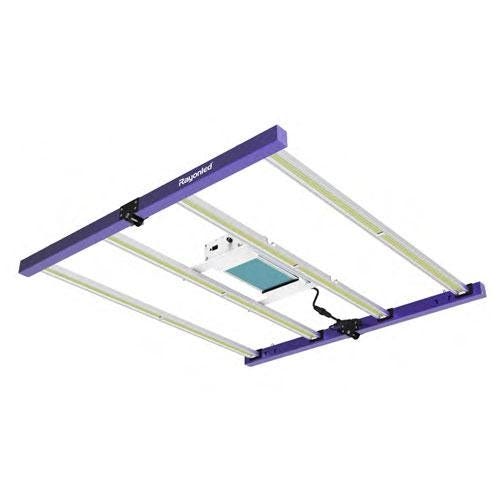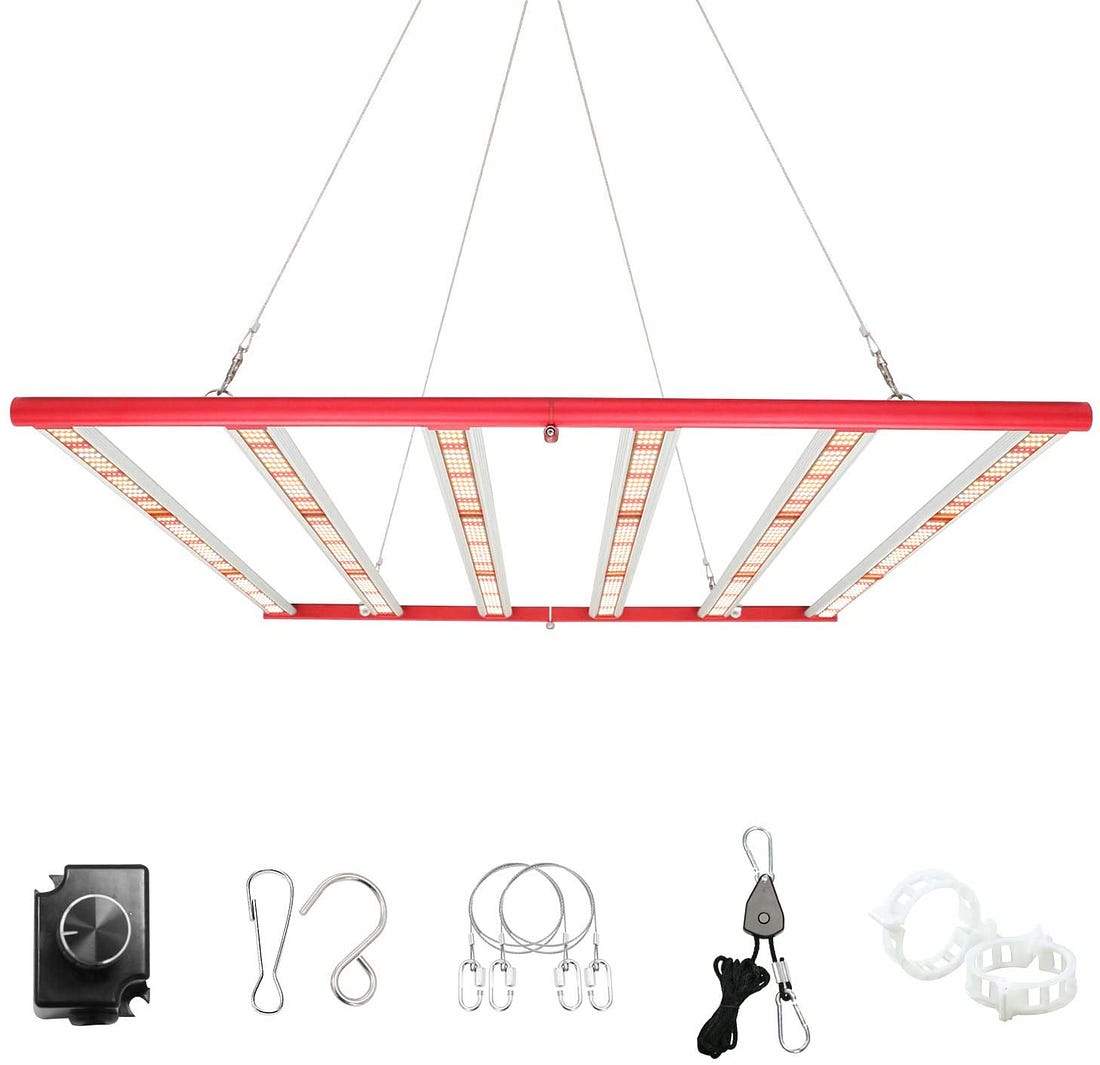- Home
- SHOP ECO FARM
-
TOP BRANDS
-
Grow Lights Brands
- Adjust-A-Wing
- Apollo Horticulture
- Bestva
- Black Dog LED
- California Lightworks
- ChilLED Grow Light
- Eco Farm
- HLG - Horticulture Lighting Group
- Kingled
- Kind LED
- Mars Hydro
- Morsen
- Neilo
- NextLight
- Phlizon
- PlatinumLed
- Roleadro
- Optic LED Grow Lights
- ViparSpectra
- Vivosun
- EYE Hortilux
- IPOWER
- NanoLux
- Phantom grow light
- Gavita grow lights
- Grower's Choice
- Lumatek
- Maxibright
- Yearld Pro
- ThinkGrow
- Crecer Lighting
- Green Sunshine Electric Sky
- fohse aries
- loriflux
- luxx
- fluence
- iluminar
- Lex
- LTC
- Rayonled
- FGI
- PHOTONTEK
- Grow Tents & Kits Brands
- Extraction & Harvest Brands
- Climate Control & Hydroponic Brands
-
Grow Lights Brands
- COMPANY INFO
- COOPERATE WITH US
- Blog
- Sign in
- Home
-
SHOP ECO FARM
- ECO Farm Grow Lights
- ECO Farm LED Grow Lights
- ECO Farm Quantum Board
- ECO Farm Samsung LED Grow Lights
- ECO Farm COB Grow Lights
- ECO Farm Commercial Lights
- ECO Farm Supplemental Grow Light
- ECO Farm Fluorescent grow lights
- ECO Farm HPS & MH Grow Lights
- ECO Farm CMH Grow Lights
- ECO Farm HID/CMH Bulbs & Ballasts
- ECO Farm Grow Tents & Kits
- ECO Farm 2x2ft Grow Kits
- ECO Farm 3x3ft Grow Kits
- ECO Farm 3.3x3.3ft Grow Kits
- ECO Farm 4x4ft Grow Kits
- ECO Farm 5x5ft Grow Kits
- ECO Farm Grow Tent - Standard Style
- ECO Farm Grow Tent - Extension & Roof & Lodge Style
- ECO Farm Extraction & Harvest
- ECO Farm Rosin Press Machine
- ECO Farm Dry & Wet Trimmers
- ECO Farm Oil Accessories
- ECO Farm Medicinal Plants Grinder
- ECO Farm Medicinal Plants Containers
- ECO Farm Medicinal Plants Dryer
- ECO Farm Refrigeration Dryer
- ECO Farm Climate Control & Other Accessories
- ECO Farm Inline Duct Fans
- ECO Farm Oscillating Fans
- ECO Farm Exhaust Fans
- ECO Farm Air Filter
- ECO Farm Duct Muffler
- ECO Farm Ventilation Kits
- ECO Farm Plant Humidifiers
- ECO Farm Plant Dehumidifiers
- ECO Farm Hydroponic Accessories
- ECO Farm Other Accessories
- ECO Farm Hydroponics Microscopes
-
TOP BRANDS
- Grow Lights Brands
- Adjust-A-Wing
- Apollo Horticulture
- Bestva
- Black Dog LED
- California Lightworks
- ChilLED Grow Light
- Eco Farm
- HLG - Horticulture Lighting Group
- Kingled
- Kind LED
- Mars Hydro
- Morsen
- Neilo
- NextLight
- Phlizon
- PlatinumLed
- Roleadro
- Optic LED Grow Lights
- ViparSpectra
- Vivosun
- EYE Hortilux
- IPOWER
- NanoLux
- Phantom grow light
- Gavita grow lights
- Grower's Choice
- Lumatek
- Maxibright
- Yearld Pro
- ThinkGrow
- Crecer Lighting
- Green Sunshine Electric Sky
- fohse aries
- loriflux
- luxx
- fluence
- iluminar
- Lex
- LTC
- Rayonled
- FGI
- PHOTONTEK
- Grow Tents & Kits Brands
- Apollo Horticulture
- Black Box
- CoolGrows
- Eco Farm
- GrowLab
- Gorilla Grow Tents
- Mars Hydro
- Quictent
- Secret Jardin
- Unit Farm
- TopoGrow
- VIVOSUN
- Topolite
-
COMPANY INFO
-
COOPERATE WITH US
- Blog
Rayonled GLMF400W LED Grow Light VS AGLEX M400 LED Grow Light Bar
December 28, 2021
The grow light industry is booming, with more and more people deciding to develop their gardens. Led lighting has emerged over the past few years as a reliable lighting option to supplement a lack of natural sunlight. The top-led grow lights that make your list will be significantly impacted by two factors-what you intend to grow and the size of your indoor growing space. Keep reading and you will get an answer.
Why use lights for plants?
It’s sensible to think, “why provide artificial light for indoor plants? Isn’t natural window light enough?” After all, natural light is certainly what the plants get when growing outside. If you’re fortunate and have sun-soaked windows in your home, you may have little need for artificial lighting. Anyone who has insufficient window light or who otherwise can’t utilize their windows for growing plants, though, would benefit from giving their plants brighter conditions.
Who benefits from using plant lights?
Anyone who doesn’t have ideal natural-light conditions for their plants would benefit from using plant lights (also called “grow lights”). You don’t have to be a tropical plant aficionado to make use of them, and anyone with an available power outlet can try it. Setups can be as simple or as complex as you’d like. Seed-starting enthusiasts can produce more robust seedlings, and anyone trying to overwinter a lemon tree, some herbs, and aloe, or patio tropicals could have more vigorous plants if their winter slog could be brightened with some extra light.
What can I grow?
Just about anything that fits under the light, especially among plants that don’t require very bright light to thrive. Aside from seed-starting, cultivating tropical plants year-round is a common use. The wandering habits of a climbing species might be challenging to wrangle into a limited area, but plenty of houseplants are compact enough to sit under a fixture. Some of the stronger lights are bright enough to satisfy high-light lovers like succulents, bromeliads, and possibly even herbs, but many houseplants fall into the “bright, indirect” crowd and their needs are pretty easy to accommodate. Tropical species native to the forest floor, where they only receive drifting patches of dappled sun, also tend to be well-suited to growing under artificial light.
Rayonled GLMF400W LED Grow Light

Features:
This Rayonled LED grow light is designed for plants in the vegetative stage the spectrum minimizes the stretch and allows for better and faster root structure, bigger stems and more dense leaves. From the spectrum to the certifications, it has been thoughtfully crafted to compete with the top grow light on the market. It is a foldable grow light (already assembled plug-and-play). 4 passively cooled bars provide full-spectrum, broad-coverage light for full-term growth. In addition, this grow light also has high-output 1080 μmol PAR and an impressive efficacy of 2.7 μmol/J per watt to satisfy your indoor plants. The independent bars and driver ensure that even if a problem occurs the light can be repaired without losing the production of the entire fixture.

Features:
AGLEX grow light is equipped with upgraded SMD 3030 chip and 4 high-efficiency aluminum bars to ensure higher PPE 2.8umol/J efficiency, better heat dissipation and longer life. Compared with old plant lights, the maximum output per watt is 2.8 grams, the average PPFD is increased by 30%, and the yield and quality are increased by 50%. 888 LEDs consume only 400 watts, which perfectly covers 5x6 feet. The 400 watt LED plant growth light M400 will help you achieve maximum quality and quantity. 4 led plant lights, each grid is coated with high-grade glue, waterproof and clean, not easy to be full of dust. This plant growth lamp has a special dimmer, which can precisely adjust the brightness. 0–10 levels are available. This means you can clearly see the brightness level and record it as you adjust it. Don’t worry about the difference.
Factors to Consider When Purchasing Indoor Gardening Grow Lights
Before buying grow light lamps, there are many factors to consider. Some of the most important considerations include the size of space to be lit, distance from plant to light source, and cost.
The first consideration when making a purchase is the size of the space you want to light. If you want to grow more than one plant in your indoor garden, you would need a larger lamp than if you just wanted one plant.
The second consideration is how far away from the plants will the grow lights be placed. How far away will they be depends on where on earth you live and what kind of light bulbs they use in your area so it is best if you research this before purchasing anything.
Lastly, it’s necessary to think about money and budget when deciding how much money should go towards these lights.
How To Use Grow Lights Work and Support Healthy Plant Growth
Grow lights are a necessity for indoor plant growth. They are used to give the plants energy they need to grow. There are different types of grow lights. Some are best for vegetative growth, while others are best for flower production.
There are many benefits to using grow lights indoors, but choosing the right one can be difficult. Grow lights work by emitting light in the form of wavelengths that plants can use photosynthesis to produce food and grow healthy leaves and flowers. Depending on the type of light you choose, your plants may have different needs in terms of temperature, humidity, ventilation and water consumption during their lifetime cycle.
Grow Light For Indoor Plants FAQs
Are grow lights for indoor plants safe?
Most often, the answer is yes, but it’s always good to read the details to see what kind of safety features are included in the design of the grow light you purchase. Though incandescent and, to a lesser extent, fluorescent household lights can become extremely hot if left on for long periods, dedicated grow lights tend to use LED, which is not only more energy-efficient but remains much cooler over long periods of use. Many consumers grow lights also have other safety (and convenience) features like auto on/off modes, timers, and heat-dissipating designs and materials.
Can I use normal led lights to grow plants indoors?
While you could use any LED grow light to grow plants, they’re not guaranteed to do the job and help your plants grow healthily or quickly. Most high-quality, current LED grow lights are COB (chip on board) LED and Quantum Board LED- lights specially designed to emit full-spectrum light for optimal photosynthesis. So while you can use any household LED, if you are invested in the healthy, efficient growth of your indoor plants, buying a purpose-built grow light is a good idea.
How do you use grow lights on indoor plants?
Generally speaking, most flowering plants and vegetables require 12 to 16 hours of light exposure daily- and flowering plants (which indoor plants often are) need the most. That said, an important part of a plant’s growth cycle is darkness, so while you can technically leave your indoor plants exposed to your grow light 24/7, they won’t be getting the benefit of every aspect of their growth cycle. Most plants really need about 8 hours of darkness a day in order to make the most of their potential growth cycle. On top of that, leaving your lights on 24/7 isn’t energy efficient, so it’s best to follow the above guidelines if you want the healthiest plants possible.
Also in Indoor Grow LED Grow Light
HLG Greenhouse Pro HE HV 630W LED Grow Light VS Geeklight grow light 480W hydroponic led grow light
October 20, 2023
